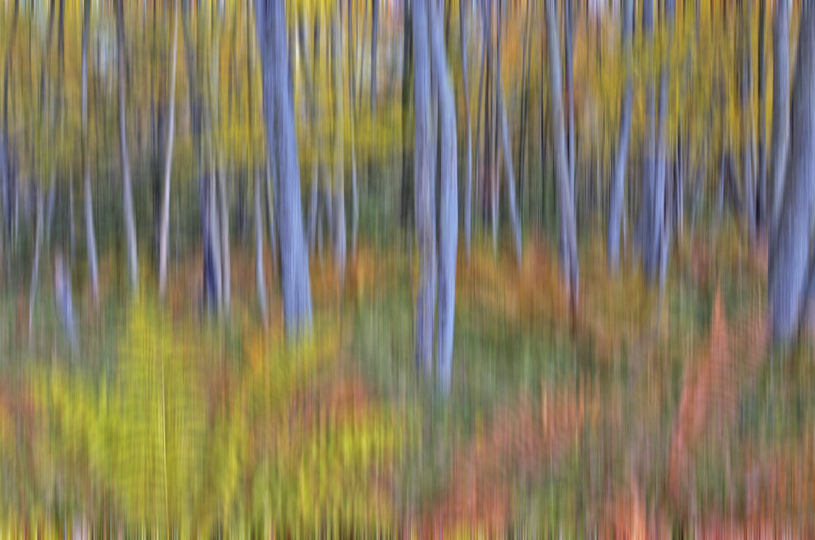These programs are for intended for adults or families with school-age children and have similar topics as the Hands-On Programs, but have a foundation of photography rather than hands-on activities.
These educational programs require use of a digital projector and a space where a screen exists or can be set up. Most of the topics are one hour programs, allowing ample time for questions and discussion.
Program Topics:
Essential Elements of a Habitat Yard: Everything You Need to Know to Create a Wildlife-Friendly Space
In the United States, more than 40 million acres of land is turf grass. The fastest way to destroy an ecosystem is to transform it into lawn/turf grass—an outdated, expensive practice that creates a massive monoculture. Yet every summer, millions of people spend millions of dollars, and thousands of hours maintaining this monoculture for all kinds of reasons. What if I told you there was another way– a way to keep some of your green space, but still welcome wildlife?
If we stop long enough to consider the impact this practice has on our Earth, we might change. If we understand how birds are connected to insects and insects to native plants, we might change. If we realize the ecological services habitat provides–like oxygen, clean water, flowering plants courtesy of pollinators– we might change. Most of all, if we understood that we are a part of nature, rather than separated from it, we might change.
In this program ,we’ll explore some ways to make your yards more wildlife friendly, starting with the creation of habitat islands in your lawn. We’ll discuss how birds are connected to caterpillars, define some common garden terms, talk about keystone plants, look at the needs of some of our local species of butterflies, moths, and other pollinators, and learn how simple changes in the way you maintain your space can have a giant impact. And don’t worry, rewilding your yard doesn’t mean you have to give up your beloved peonies or roses. Instead, it’s about finding a balance and including elements in your space that give wildlife a chance.
Moths and Why We Need to Think About Them Differently
When many people think about moths, they probably don’t consider them beautiful, very diverse, or worthy of protecting. But guess what? Moths outnumber butterflies TEN to one! Worldwide there are more than 160,000 species of moths and about 17,500 of butterflies. Moths and their caterpillars are the foundation of the food chain, especially appealing to songbird parents who must feed their growing chicks. The diversity is shocking, as are the colors, shapes and adaptations. There are moths with fake eyes, moths with perfect camouflage hiding secret colors, moths that mimic other insects, moths with long tails meant to outsmart bats, moths that sleep in flowers, moths with long proboscises that can reach deep into the nectary of flowers, and moths with antennae so perfect you’d swear they were feathers. There are yellow and pink moths, delicate green moths, and moths with intricate designs that look hand-painted.
In this program we get an introduction to the amazing world of moths, including a chance to see and learn about some of our more amazing local moths. We’ll also learn about their important place in the food web and how we can make our yards and outdoor spaces more moth friendly.
Gardening for Butterflies and Moths: Why You Need the Nectar Bar AND the Salad Bar
After discussing the basic lifecycle of all Lepidoptera (butterflies and moths), we will look at their basic needs. Most butterfly gardens fall short because they only address the needs of the adults, ignoring the needs of the caterpillars. This presentation offers ideas on how to get started in your yards including a list of host plants of some of our most common species of Lepidoptera.
Magic in the Dark: An Introduction to Glowing and Flashing Insects and Ways to Make Your Yard More Firefly Friendly
Most people are shocked to learn that there are more than 2000 species of fireflies in the world. Many of us have fond memories of them from our childhoods, but never really got around to knowing much other than that they flash and are challenging to catch. These days there seems to be a lot fewer fireflies than when we were kids. But is that really true? And if so, then why?
In this presentation, through stories, photos, and video, we will learn about the unique lifecycle of flashing and glowing insects, including fireflies and railroad worms. After some general information, we’ll focus on a few of our local “celebrities.” Have you heard of a blue ghost, or a synchronous firefly? Know much about how these differ from other fireflies and what makes them so special? How do fireflies spend their lives before becoming the winged adults we all know and love? What do they eat, and how long do they live? We’ll learn these answers and much more, including tips on how you can make your own yards more firefly friendly.
An Introduction to Bats, and Why we Need to Welcome Them into our Yards
Bats are amazingly diverse, and incredibly important to a healthy ecosystem. One average size bat can eat up to 1000 mosquito-sized insects in ONE HOUR and save farmers all over the world millions of dollars in pest control. Yet so many people have a negative opinion of this gentle animal. With the help of my friend and world-famous bat biologist Merlin Tuttle”s photos, this program will introduce you to the fascinating world of bats. You’ll learn about bats that hunt insects, bats that pollinate flowers and bats that live in colonies numbering in the millions. In addition you’ll learn why you would want to welcome them into your yards, and how to go about that.
Insectomaina– An Introduction
The diversity of insects is incredible and they are essential members of the food chain and ecosystem. Sadly, many people look at them only as something to get rid of, or control. After defining what it is that makes an insect an insect, this presentation will touch briefly on some of the more common orders of insects, giving people a better understanding of why insects are so important, and how people can create wildlife-friendly habitats at home.
Who’s Who in the Milkweed Community
These days more and more people know about planting milkweed for the monarchs. With milkweed though comes an entire community of insects and other invertebrates. This presentation will introduce people to the milkweed community.
Pond Patrol
Have you ever wondered what creatures live in the mud at the bottom of the pond? Or perhaps you’ve seen little critters swimming through the water and wondered about them… how do they see, what adaptations do they have, what do they eat? Many insects begin their lives in freshwater, living out of sight, sometimes for years, before transforming into winged adults. In this presentation we will meet some of the common freshwater insects, including dragonflies, damselflies, mosquitoes, craneflies, mayflies, and more. Many people have likely seen, but know nothing about these fascinating insects. Have a pond in your yard? Learn some ways you can make it more friendly and inviting to the critters who live in the pond and the one thing NOT to do.
Marvelous Monarchs
This presentation will look at the lifecycle of the monarch butterfly and discuss their incredible migration. We’ll get to see photos of monarchs at all stages of their lives, and will discuss their overwintering sites in Mexico, including details on where and when to go if you’d like to see them for yourself. We will also talk about what steps people can take to help the monarchs.
Insect Superstars
There are many insects whose adaptations are hard to believe. This presentation looks at some with Super Stats.
Make Some Noise
What does the fox say? Do you know that a cicada makes the loudest sound of any insect in the WORLD? Do you know what one looks like? Do you know what the frogs look like that serenade us for weeks in early spring? Or what those noises are on hot summer nights coming from the grass outside of our windows? Come listen and look at some of these animals.
Little Wonders: The Spineless Majority (Insects and spiders!)
There are over one million different kinds of insects! Of those, less than 1% are considered pests. There are more than 50,000 species of spider! Both play an essential role in our food chain and provide us with countless services, such as insect control, decomposition of organic material and pollination of our crops. Get a close look at some of these important creatures.
Focus on Spiders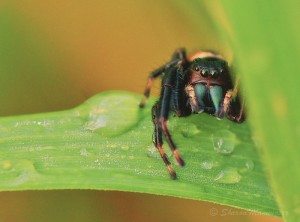
There are 50,000 named species of spiders though scientists estimate this may be only 10% of all that actually exist. None will likely will any popularity contests! But spiders are essential controllers of insect populations and our world as we know it could not exist without them. Discover the amazing adaptations of these plentiful creatures.
The Creatures of Halloween: Spiders and Bats
Often portrayed as harbingers of evil these two creatures are feared and disliked by the general population. But neither animal deserves its negative reputation and many of the “facts” about them are simply not true. Learn why bats and spiders are beneficial and why, like all creatures, deserve our respect.
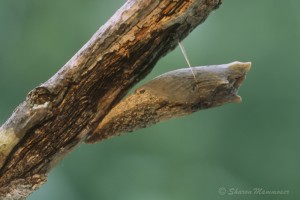 Tracks and Traces: Learning From What Animals Leave Behind.
Tracks and Traces: Learning From What Animals Leave Behind.
Everything living from a tiny snail to a majestic moose leaves things behind as it goes about its daily activities. These clues give us great insight about our outdoor neighbors. Can be done as a general program, or with a seasonal emphasis such as what to look for in spring, winter, etc.
Your Own Backyard
What do you know about the animals you share your yards with? Do you know what makes a reptile a reptile or an insect an insect? In an hour, we will look at representative animals from each group, identifying their unique characteristics and getting to know a few of the more commonly encountered members.
 Creatures of the Night
Creatures of the Night
When the last light of day gives way to darkness and people retire to the comfort of their homes, many animals wake from their slumber and go off in search of food and mates. Bats, owls, moths, coyotes, raccoons… what do you know about the creatures of the night?
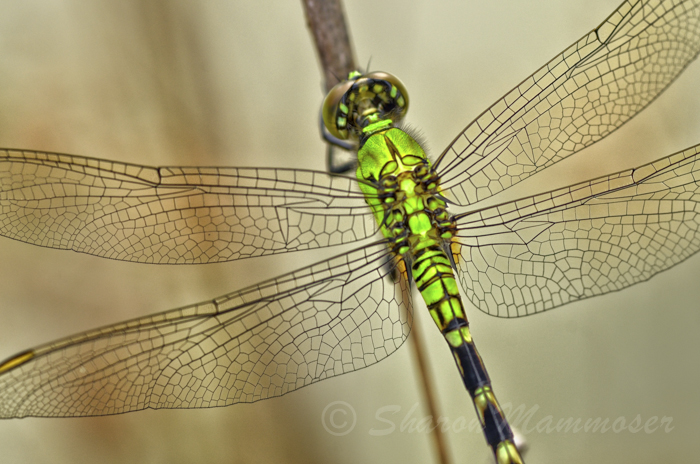 Fact or Fiction
Fact or Fiction
Have you ever been told that dragonflies will sew up your lips? Or that touching toads will give you warts? Or that bats are blind? Or owls can turn their heads all the way around? Discover how much of what you know is fact and how much is fiction!
Winter World
For many people the cold days of winter mean one thing–more time inside where it’s warm and cozy. But what of all the animals that live outside, what becomes of them as the snow blankets the frozen ground and temperatures fall to the single digits? From the comfort of a heated room, experience the beauty unique to winter and discover the amazing ways animals survive this season.
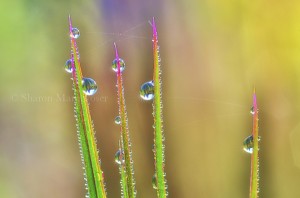 Sense of Wonder
Sense of Wonder
Want a chance to sit back, relax and immerse yourself in the serenity of nature? In our hurry-up and hectic world, we sometimes neglect to take time out to just BE–to let ourselves be awed, inspired and rejuvenated by the world outside of our doors, which on any given day at any time of day offers something of interest to the careful observer. Set to music, this program will leave audiences with a renewed sense of wonder for the amazing world we live in, and sometimes, take for granted.
Photographing Nature
Photographing nature is a hobby of many people, though often the results don’t equal the expectations. Come look at some of the inexpensive ways you can improve your photography, beginning with how to see. Using my photography, I will show how little changes can make big differences.
Lepidoptera! The Wonderful World of Butterflies and Moths
Did you know there are more than 180,000 kinds of butterflies and moths and guess which group has more? Are there more butterflies or moths? How can you attract these lovely creatures to your garden or yard? What adaptations do they have? Have you ever watched a caterpillar make its chrysalis? Or watched a butterfly emerge? The natural world is truly miraculous! Come check out these common creatures that bring beauty to our world!
All of the following are also available and can be created custom for your needs.
Focus on Insects
Focus on Bats!
Focus on Mammals
Focus on Amphibians
Focus on Reptiles
Focus on Birds
Focus on Vertebrates (mammals, amphibians, reptiles, birds, fish)
To Return to my Programs page, Click Here

